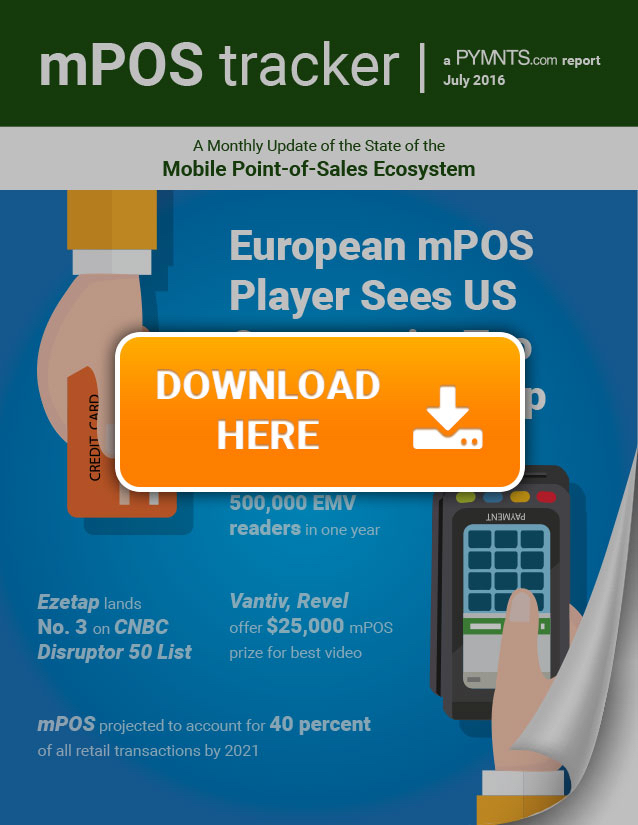EMV As mPOS Competitive Advantage
The land of mPOS opportunity? Since last October’s EMV liability shift, the U.S. market has captured the attention of several global mPOS providers, including several that once thought the U.S. was too much of a red ocean. For the July edition of the mPOS Tracker™, PYMNTS spoke with SumUp CEO Dan Klein about how EMV changed all that. Catch that, plus the latest news and updates from around the mPOS space, along with a player directory containing the profiles of more than 200 providers.
Before October 2015, most European mPOS providers were not particularly interested in the U.S. market, which had yet to embrace EMV security. However, since the EMV liability shift sent ripples through the market, foreign companies, like U.K.-based SumUp, have shifted their attention across the pond. While Square, the company known for its sleek mPOS terminals, had previously dominated the mPOS market in the U.S., SumUp and others like it are now fighting to wrestle some of that control of the market away from Square.
For more about why the U.S. market became interesting for foreign players, and the challenges faced by international mPOS providers hoping to find stateside success, PYMNTS caught up Dan Klein, CEO of SumUP.
Here’s a preview:
While EMV adoption and the liability shift in the U.S. falls in line with the rollout in Europe, a benchmark market for post-EMV fraud decline, it differs in the way it was actually implemented in Europe.
In Europe, for instance, EMV transactions are packaged together with PIN security. However, giving way to consumer convenience, the U.S. market has adopted dip and sign. This means that, for European mPOS players, entering the U.S. market essentially demands versioning their products to accommodate the expectations of American consumers.
“For the U.S. market, we simplified it quite significantly,” Klein said. “A very important difference is it doesn’t come with a PIN pad and in Europe we always use a PIN pad.”
The ubiquity of PIN-less chip cards in the U.S. can be estimated by the fact that over 60 percent of Visa’s chip-based credit and debit cards didn’t require PIN or signature until last year.
While currently uncommon, it is projected that the U.S. market will see a larger share of chip and PIN backed transactions by 2025 as merchants like Walmart push for PIN-based transactions for better security.
Around the world of mPOS
New data from Juniper Research on the rise of mPOS technology projects that mPOS terminals and technology will account for 40 percent of retail sales by 2021. In an effort to capture as much of that market as possible, mPOS providers across the globe recently rolled out notable new products and offers.
Cybersecurity company Thales announced it would roll out the payShield 9000 hardware security module in the United Arab Emirates, helping tech provider Swiftch launch a MasterCard and Visa certified mPOS solution in the middle east. WePay, meanwhile, debuted a new mPOS solution that promises to help retailers integrate online and in-person payments.
Square announced it would offer their popular EMV card reader under a new pricing option, delivering potentially good news for merchants who could not afford the reader’s $60 price tag. The reader, which saw half a million sales in its first year on the market, will now be available for 60 $1-a-week payments.
The July edition of the mPOS Tracker™ features the latest industry news from the mPOS space along with the profiles of more than 210 players, including five new additions to the tracker and two updated profiles.
To download the July edition of the PYMNTS.com mPOS Tracker™, click the button below …
About The Tracker
The PYMNTS mPOS Tracker™ is your go-to resource for staying up to date on a month-by-month basis. The tracker highlights the contribution of different stakeholders, including institutions and technology coming together to make this happen.

